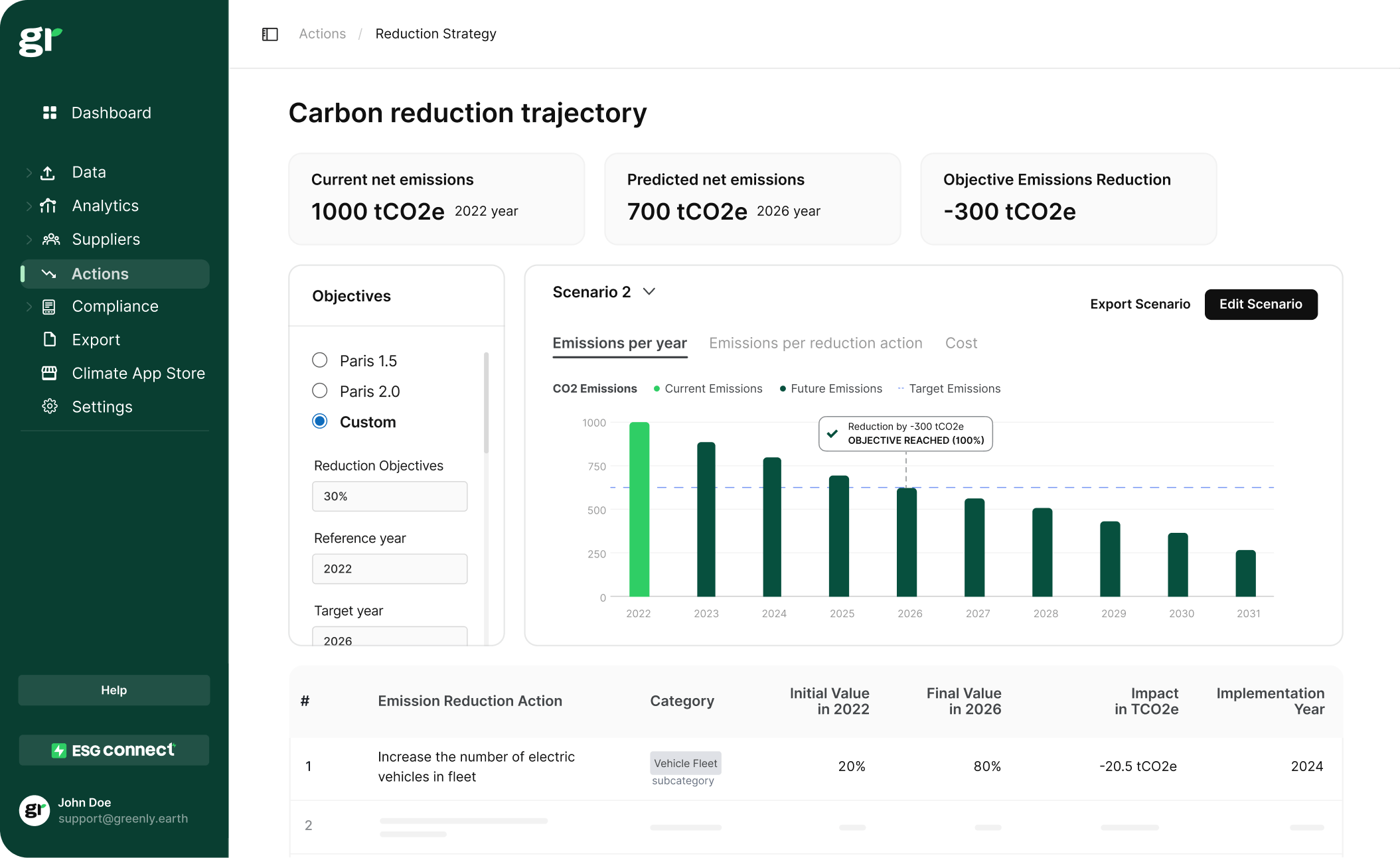ESG / CSR
Industries
Our Guide to Principles for Responsible Investment (PRI)



Inflation, sustainability, and climate change are driving investors to reconsider how they allocate their funds. PRI, also known as Principles of Responsible Investment, are guidelines that incorporate these considerations with the aim of encouraging a more sustainable global financial system.
💡 In fact, PRI signatories are encouraged to adopt responsible ownership practices by integrating ESG considerations into their investment decision-making and active ownership strategies, since as a whole – sustainable investing requires keeping the environmental and social responsibility in mind.
But what exactly are the Principles for Responsible Investment (PRI), and how can they assist individuals and businesses in achieving their financial goals while also benefiting the environment? Let's delve into the world of PRI and explore its significance.
👉 In this article, we'll discuss the Principles for Responsible Investment, otherwise known as PRI – and how can they help individuals and businesses alike meet their financial goals while also benefiting the environment?
What are the Principles for Responsible Investment (PRI)?
The Principles for Responsible Investment, or PRI for short, is an internationally recognized guideline for investors to ensure that their financial choices and investment portfolios (across all asset classes) remain ethical and responsible.
PRI seeks appropriate disclosure on ESG factors to help adhere to UN principles while also allowing portfolio managers to decarbonize their current fiduciary duties – as PRI remains as the world's leading proponent for responsible investment decision making.
By implementing these principles for responsible investment, signatories contribute to the development of an international network and globally sustainable financial system. This can help to achieve broader objectives , as influential investors may encourage investor signatories to better understand the positive investment implications and improved international organization that can ensure with PRI.
👉 PRI acts as a guideline to help investors ensure that their investment decisions are ethical, responsible, and aligned with specific values that benefit all parties involved, while also considering important factors such as the environment and society.
What is the goal of the Principles for Responsible Investment (PRI)?
The main goal of the Principles for Responsible Investment (PRI) is to promote acceptance of responsible investment through the incorporation of Environmental, Social, and Governance (ESG) factors into investment practices.
The principles of responsible investing work towards making PRI the norm for future investors, especially as investors increasingly recognize the importance of sustainable investments due to climate change.
Let's break down the acronym 'ESG'.
Environmental
The 'E' in ESG refers to environmental measures such as the reduction of carbon emissions, energy conservation methods, water usage, treatment of animals, and more.
Investors should incorporate environmental consideration into their investment decisions by seeking sustainable investments and companies that illustrate their dedication to reducing emissions and combating climate change.
Social
The ‘S' in ESG refers to society and social interactions. Investors that are committed to responsible investing should seek socially responsible investments that not only generate financial returns but also benefit society over time.
Governance
The 'G' in ESG pertains to how an investor manages and executes business activities and investment portfolios.
For example, governance could involve resolving potential internal conflicts between a company and its investors, showcasing the willingness of both the beneficiary and the investor to address and resolve issues. Governance is essential in investing as it reveals the commitment to problem-solving and responsible practices.
Besides adhering to ESG values, what are the other principles for responsible investing (PRI)?
What are the six main principles of PRI?
The principles for PRI were initially released in April 2006 at the New York Stock Exchange, with roughly only 100 initial supporters.
These principles emphasised investors' commitment to seeking the most beneficial impacts for their beneficiaries and prioritising ESG values in their investment portfolios. Regardless of company size, location, or investment journey, signatories of PRI were obliged to follow these principles.
👉 The PRI are independent, and are not associated with any government of international body. They are however supported by the United Nations, which is why you may hear them referred to as the UNPRI.
The six main principles of PRI are essentially investment principles that allow investors to incorporate ESG factors into their investment practices more effectively.
The six core principles of PRI are listed below:
Principle 1
ESG issues should be incorporated into the investment analysis and financial decision-making process.
👉 This can be achieved by implementing ESG values into future investment policies, supporting the development of ESG tools for calculating ESG data, engaging internal and external investment managers, seeking advice from financial consultants, analysts, or brokers, promoting research on the importance of ESG values in finance, and encouraging professional training for investment practitioners.
Principle 2
Investors should seek to implement ESG values in their own investments through ownership policies and practices. Active owners are able to use their rights and position of ownership to influence the activities or behaviours of investee companies.
Investment and ownership decisions that support responsible investment include exercising their voting rights, pursuing transparency with their beneficiaries, increasing engagement with their investments over time, setting long-term goals that go beyond financial returns, and communicating with investee companies about the ESG values that matter most to them.
👉 Personalising ESG values helps investors develop intrinsic motivation necessary to adhere to align investors PRI.
Principle 3
Investors should provide appropriate disclosure information about their investments in a timely, accurate, and transparent manner.
This involves setting reporting requirements and deadlines, incorporating ESG criteria into financial reports, requesting updated codes of conduct from companies to ensure accuracy in reporting, and supporting shareholders' efforts to improve transparency.
Principle 4
Investors should advocate for the implementation of PRI values throughout the entire investment industry.
This can be accomplished by including Principles for Responsible Investment in initial proposals, effectively communicating expectations regarding ESG values in the investment process, mending relationships with providers that previously failed to incorporate ESG values, and supporting future regulations that promote PRI implementation. The goal is to make the investment process more transparent, environmentally friendly, and beneficial to society as the new norm.
👉 One of the primary goals of PRI is to make the investment industry more transparent, environmentally friendly, and beneficial to society as the new norm.
Principle 5
All parties involved in the investment process should collaborate to implement the Principles for Responsible Investment.
This involves supporting networks that provide assistance and education on investor reporting, addressing conflicts collectively and in a timely manner, and creating sustainable initiatives that all investment participants can comply with.
Principle 6
Signatories should report on their progress in incorporating the previous five principles.
This includes disclosing current activities such as voting, tactics for improving engagement, changes to investment policies, communicating the importance of ESG issues and PRI values to beneficiaries, ongoing reporting on progress, evaluating the impact of PRI implementation, and raising awareness among other stakeholders.
👉 In addition to the six Principles for Responsible Investment, responsible investment signatories must also annually report on their investment activities to ensure accountability.
How does PRI work?
PRI works by emphasising the understanding of how environmental, social, and governance factors (ESG) can impact investments and beneficiaries. Once investors sign on to PRI, they must implement ESG values across their personal and business investments. Through this collective effort, PRI aims to shift the financial industry towards valuing ESG criteria.
PRI is an ongoing commitment that requires continuous effort beyond the initial signing, ultimately leading to more responsible and sustainable investment practices.
How is using PRI different from other popular sustainable investments, such as socially responsible investing, impact investing, or green financing?
The table below will provide a step-by-step guide on how the PRI works:
| Step | Description |
|---|---|
| 1. Sign Up | Organizations interested in responsible investment become signatories to the PRI by committing to its six principles. |
| 2. Commit to ESG Integration | Signatories agree to integrate Environmental, Social, and Governance (ESG) factors into their investment decision-making processes. |
| 3. Collaborate and Engage | Participate in collaborative initiatives, such as engaging with companies and policymakers to advocate for responsible investment practices. |
| 4. Report Progress | Submit an annual report to the PRI organization detailing how the principles are being implemented and the outcomes achieved. |
| 5. Access Resources | Utilize tools, research, and guidance provided by the PRI to improve ESG practices and investment strategies. |
| 6. Share Best Practices | Learn from and share insights with a global network of responsible investors through PRI events and publications. |
What are the benefits of using the Principles for Responsible Investment (PRI)?
Signing onto PRI helps investors make better investment choices, contributes to transitioning financial markets and economies toward sustainability, and ultimately benefits the environment and society in the face of climate change.
PRI benefits investors by providing a user-friendly guideline that enhances their understanding of returns and management risks, enabling them to employ better investment tactics in personal and business contexts. Responsible investing benefits not only the investors themselves, but also the environment and society as a whole – as participating members help promote the importance of ESG integration.
👉 The true benefit lies in creating genuine change within the investment and finance industry, promoting environmental sustainability and fostering a more equitable society. PRI can provide investors with intrinsic motivation to incorporate progressive elements into their investment practices, extending beyond financial returns.
How can you get started with PRI?
If becoming a signatory to PRI interests you, here is a guide to getting started.
Seek Support From Your Manager
Responsible investment relies on support from senior management. Therefore, you should look to engage with your financial activities manager for guidance on the next steps to adhere to PRI values.
Create Your Plan
Educate yourself on innovative investment ideas and start drafting your investment plans, aligned with ESG values and all six Principles for Responsible Investment. As a signatory, you will gain access to additional resources to support the creation of responsible investment plans.
Collaborate
PRI thrives on teamwork. Recruit beneficiaries, stakeholders, and collaborative partners who can contribute intellectually and adhere to all six principles. It's important to note that while finding collaborations in the beginning may seem challenging, remember – networking opportunities will expand once you become a signatory.

Make Reporting Your New Norm
Reporting is compulsory for PRI signatories as one of the commitments they make when signing the six Principles. New signatories have a one-year grace period whereby the first reporting cycle is voluntary – and transparency reports can remain anonymous. The PRI encourages new signatories to report in their voluntary year to learn about the reporting process.
After reporting, signatories receive a Transparency Report and an Assessment Report. The Transparency Report gives detailed responses to a selection of the questions and is published on the Signatory Directory.
The Assessment Report, which is private, shows module scores and rankings in signatories' peer groups. This report is available on the Data Portal but can only be shared with other signatories, if approved by the signatory. After receiving their reports, signatories may request an assessment discussion during which PRI staff can highlight how and where to adhere to best practices in responsible investment.
👉 To find out more about reporting, visit Reporting and assessment.
Meet the Bare Minimum
While the Principles for Responsible Investment encourage going above and beyond, as a new signatory, you should strive to meet the minimum requirements. This includes presenting an investment policy that incorporates more than 50% of the assets under management (AUM) aligned with PRI values, recruiting additional staff to support future investment policies, and demonstrating senior-level accountability for responsible investments.
Stay Informed & Learn More
Finally, you should seek online training to ensure that you properly educate your staff on PRI's missions. Through newsletters, training courses, and social media – you can stay up-to-date on upcoming events and reporting strategies.
The Principles for Responsible Investment will hopefully become the new norm of investing – the only question left is, how long are you going to wait to get on board?
What about Greenly?
If reading this article about principles for responsible investments, otherwise known as PRI has made you interested in reducing your carbon emissions to further fight against climate change – Greenly can help you!
It can be overwhelming for many investors and business owners alike to implement ESG and UN principles into their financial activities, but don’t worry – Greenly is here to help. Click here to schedule a demo to see how Greenly can help you find ways to help you with sustainable finance and kick-start your climate journey.
Greenly can help you make an environmental change for the better, starting with a carbon footprint assessment to know how much carbon emissions your company produces.






